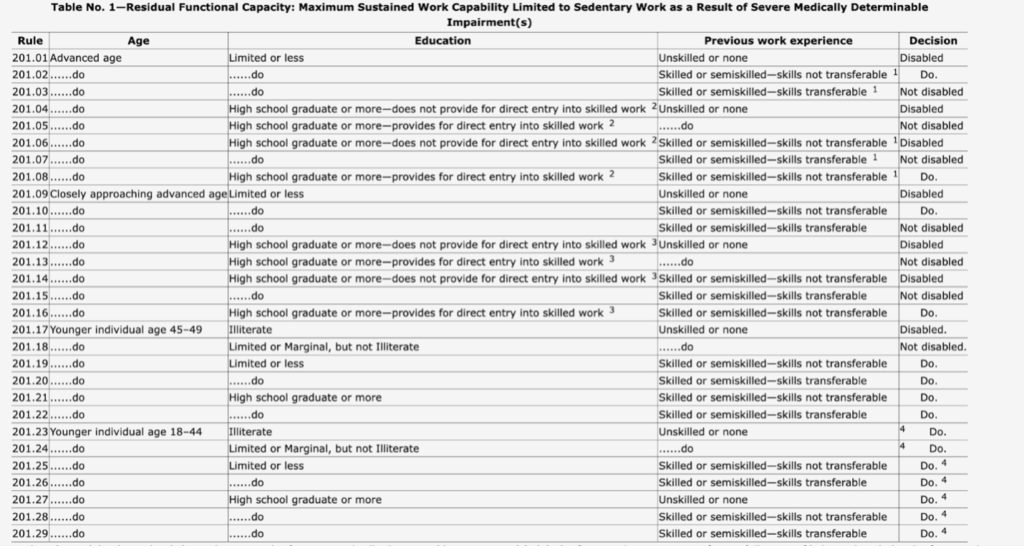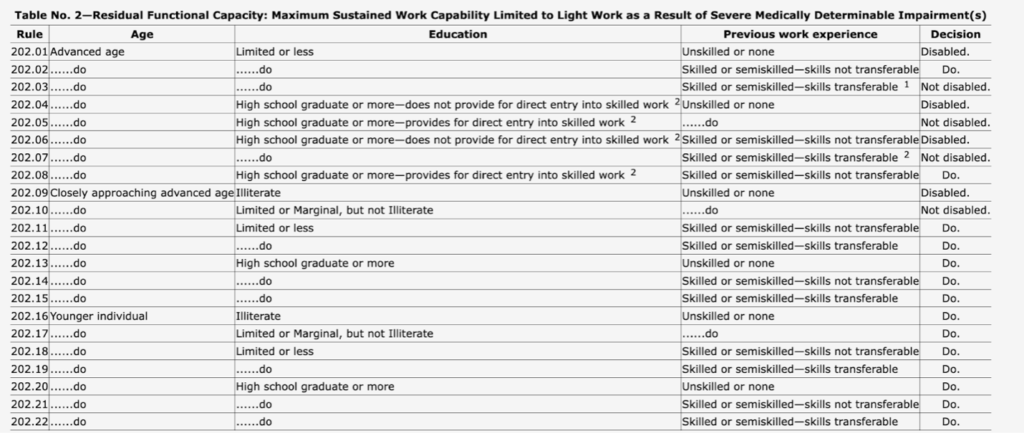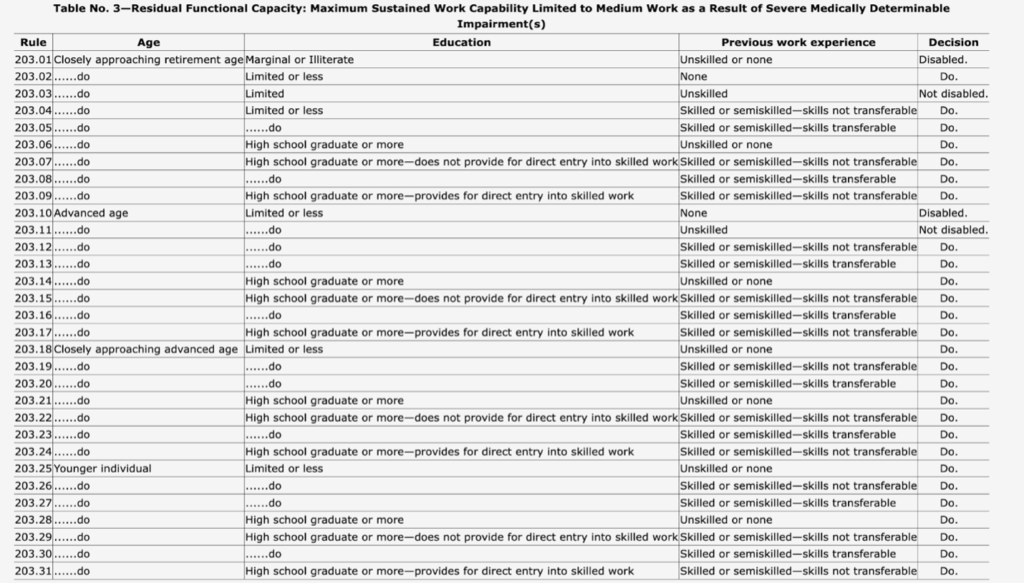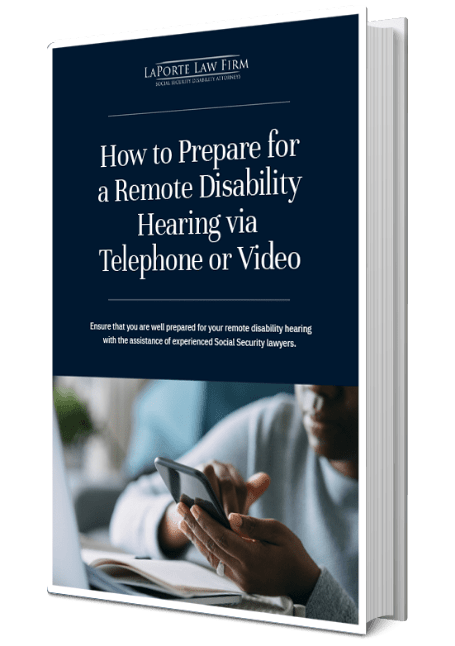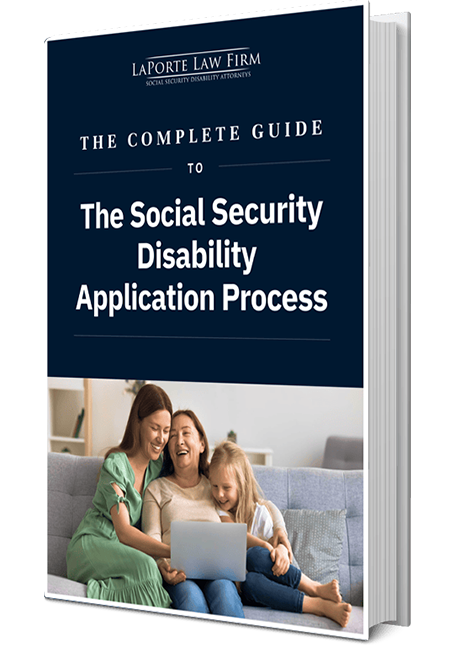
The Trump administration has proposed new rules that would have a significant impact on the Social Security disability application process. With long wait times and an initial approval rate of just 38% in 2023, every new rule and regulation carries significant weight because they impact millions of Americans.
The new rule proposals reportedly include changes to the job data used by disability adjudicators when making determinations. Also, most importantly for older individuals aged 50+, the proposed rules may reduce the impact of a person’s age on the outcome of their disability case. This is a massive change to the program, since age is a major factor in disability cases.
In general, the program makes it easier to qualify once an individual reaches age 50+, then even easier still at ages 55+ and age 60+. The anticipated proposed rule changes from the Trump administration, if passed into law, could result in an estimated 20–30% reduction in eligibility for Social Security Disability Insurance (SSDI). This reduction would disproportionately impact older Americans aged 50+ if the rule takes effect. This is due to the way that the Social Security Grid Rules work.
The Social Security disability grids are a set of tables that can determine the outcome of a disability claim, especially for older individuals aged 50+. For decades, these rules have provided a structured framework for decision-making. However, a changing workforce, outdated vocational data, and ongoing policy debates about raising the retirement age have raised a crucial question: Should the Grid Rules stay a permanent fixture of the disability evaluation process? Or are they on the verge of a significant transformation?
This article decodes the Grid Rules, explores the arguments for and against their reform, and analyzes what the future may hold for disability claimants.
What Are the Social Security Disability Grids?
The grids consider factors such as your age, education, work experience, and maximum residual functional capacity (RFC), to determine whether you have the capacity to perform other work in the national economy. This formula is called a medical-vocational profile, since it considers your work history and your medical impairments. Certain combinations of these medical-vocational factors result in a finding of disability based on specific grids, while certain medical-vocational profiles result in a denial decision from the Social Security Administration (SSA).
Why the Grid Rules matter for disability claimants
The grids acknowledge that, as a person ages, their ability to adapt to new types of work environments diminishes. This built-in consideration of age can make it significantly easier for older individuals to qualify for Social Security disability benefits.
The SSA begins considering transferability of skills acquired from your past employment once you reach age 50. To understand the Grids Rules, we should first define some terms, including the SSA’s age categories.
Age categories in the Grid Rules
The SSA defines age categories under the Grid Rules as follows:
- Younger Individual: Age 18 to 49
- Closely Approaching Advanced Age: Age 50 to 54
- Advanced Age: Age 55 to 59
- Closely Approaching Retirement Age: Age 60 or older
The regulations that apply to younger individuals (age 18 to 49) are less advantageous to the disability claimant than the regulations that apply to those closely approaching advanced age (50 to 54), advanced age (55 to 59), or approaching retirement age (60+). We will go into the reason for this in the next section using concrete examples of specific Grid Rules that apply to people from various age categories.
However, as with all claims for Social Security disability, the adjudicator must first decide the maximum work you are able to perform in spite of your impairments (i.e., your RFC).
The relationship between the grids and residual functional capacity
The RFC is the cornerstone upon which a grid rule analysis is built. An RFC assessment, based on medical records and other evidence, determines your maximum exertional level — sedentary, light, medium, or heavy work.
For example, if you have knee and back pain, the SSA may determine that you are limited to a sedentary occupation due to the lifting, standing, and walking limitations stemming from these physical impairments. This determination is the first piece of information plugged into the grid charts, and which chart to consult (sedentary, light, medium, or heavy).
How the grids fit into the five-step sequential evaluation process
The SSA uses a five-step process to evaluate every disability claim. It’s important to note that the Grid Rules only apply to step 5 of the SSA sequential evaluation. If a claimant’s RFC prevents them from performing their past relevant work, the SSA turns to the grids to see what other work, if any, they can do.
- Substantial gainful activity (SGA): Is the claimant working and earning above a certain monthly limit? In 2025, this limit is $1,620 for non-blind individuals. If yes, the claim is denied.
- Severe impairment: Does the claimant have a medical condition that significantly limits their ability to perform basic work activities? This is usually viewed as an easier burden of proof to satisfy.
- Medical listing: Does the impairment meet or equal the severity of a condition on the SSA’s official List of Impairments (the Blue Book)? If yes, the claim is approved. If not, the claim moves to step 4.
- Past relevant work: Can the claimant perform any of their past jobs from the past five years? If yes, the claim is denied. If not, the claim goes on to the fifth and final step of the sequential evaluation.
- Other work (grids applied at this step): Can the claimant, given their RFC, age, education, and work experience, perform any other work that exists in the national economy? This is where the Grid Rules are applied.
Work experience and transferable skills evaluation
In order to evaluate your past relevant work skill level, and to identify jobs in the national economy that you may be capable of performing, the SSA classifies jobs as unskilled, semi-skilled, and skilled.
- Unskilled: Work that involves simple, one- to two-step tasks, with little judgment required. Unskilled work can be learned in a short period of time, usually within 30 days on the job. Most unskilled work involves working with objects, rather than people or written content.
- Semi-skilled: Work that involves some skills but does not involve performing more complex job functions.
- Skilled: Work that involves performing more complex, detailed tasks that require a greater degree of judgment than semi-skilled or unskilled work.
The SSA will evaluate your past relevant work to decide whether you have acquired transferable skills to other occupations.
Understanding the Social Security Disability Grids: The Foundation of Medical-Vocational Guidelines
Now that we have covered the age categories, the RFC determination, types of work experience, and the five-step sequential evaluation, let’s take a look at the actual SSA Grid Rules and go over some examples regarding how these rules apply.
Sedentary residual functional capacity
The following grid table will apply to an individual who is limited to sedentary work, which in general is a person who can sit for two hours in an eight-hour workday, sit for at least six hours, and lift 10 pounds occasionally and frequently.
Light residual functional capacity
The following rule will apply to an individual with a light RFC, which in general is a person who can stand and walk for six hours in an eight-hour day, and can lift 20 pounds occasionally and 10 pounds frequently. People who can perform light-duty work are generally determined to be able to perform sedentary work.
Medium residual functional capacity
The following rule will apply to a disability claimant who has a medium RFC. A person capable of medium work is generally capable of standing and walking for a majority of an eight-hour workday, and lifting and carrying 50 pounds occasionally and 25 pounds frequently. If the SSA determines that you are capable of performing medium work, you will also be found capable of performing light work and sedentary work.
As you can see above, most medical-vocational profiles will be denied if the SSA determines a medium RFC, except for those who have a marginal or limited education and are aged 60+ with no or unskilled previous work experience, or those with a limited education who are aged 55+ with no work experience.
If the SSA finds you can perform heavy work, your claim will be denied. In general, a person capable of performing heavy work either does not have a severe impairment (the case is denied at step 2 of the sequential evaluation) or is capable of performing their past work (the case is denied at step 4 of the sequential evaluation).
Special vocational profiles
The Social Security Administration recognizes that some medical-vocational profiles warrant an automatic finding of disability. Here are some examples of medical-vocational profiles that are more favorable. Review the following examples in conjunction with the Grid Rules above. To read the chart properly, scan from left to right, adding the age category, education level, and the previous (or no) work experience to determine the outcome (disabled or not disabled).
- Age 55–59, high school education, past relevant skilled work in heavy work (i.e., construction worker): For an individual with this vocational profile, if the SSA finds a maximum RFC of light-duty work, there is a strong argument that the Grid Rules apply favorably under Grid Rule 202.06.
- Age 50–54, high school education, past relevant skilled work in heavy work (i.e., construction worker): This individual grids favorably if the SSA decides they are limited to sedentary work. In this case, Grid Rule 201.14 applies.
- Age 50+, high school education, past relevant work in skilled sedentary occupations, maximum work capacity at sedentary work, nonexertional limitations due to mental health impairments: A person with this medical-vocational profile will grid favorably under Grid Rule 201.06 (if over age 55) or 201.14 (if age 50–54). If the SSA finds exertional impairments that reduces the RFC to sedentary work, in combination with nonexertional impairments that limit the ability to sustain detailed and complex tasks, a person with this medical-vocational profile cannot perform their past skilled work, and their skills to do not transfer to other skilled work in the national economy.
The Grid Rules state that in order to find transferable skills to other sedentary occupations from past relevant work for a person of advanced age (age 55+), there must be very little, if any, vocational adjustment in terms of tools, work processes, work setting, or the industry. - Age 60+, high school education, cannot perform past relevant light-duty work, RFC is limited to light work: A person who is approaching retirement age (age 60+) who has past relevant work only in skilled light occupations (i.e., registered nurses, cashiers) and limitations to a light-duty RFC will grid favorably under Grid Rule 202.06. This is due to the idea that a person approaching retirement age is not expected to transition to an entirely new job industry, if they are found incapable of performing their past relevant light-duty work. For a finding of transferable skills to be made, there must be very little, if any, vocational adjustment in terms of tools, work processes, work setting, or the industry.
Each case is unique, and the above examples are merely representative of the types of medical-vocational profiles that tend to favorably grid.
Borderline age situations and vocational adjustment
The SSA recognizes that the age categories are not perfectly rigid. In “borderline age” situations — for example, a claimant who is a few months shy of their 55th birthday on the date of the adjudication — an adjudicator has the discretion to apply the more favorable rules of the next age category.
Arguments for reform: Criticisms of the current grid system
Critics argue that the current system is disconnected from the realities of today’s job market, which allows for flexibility with remote jobs, and new industries in tech and telecommunications. They contend that the grids make it too easy for older workers to be approved for benefits based merely on their age, without adequately considering their ability to perform less physically demanding jobs that are more common today. Some policy analysts argue for reducing the emphasis on age as a factor, believing it would reduce program costs and encourage older individuals to remain in the workforce for longer.
The challenge of replacing a standardized system
Creating a new system from scratch would be a monumental administrative and political task. Any proposed replacement would face intense scrutiny and debate, potentially taking years to develop and implement. Changing the grids system would also unfairly punish older individuals who did not grow up with personal computers or smartphones, and entered the work force in their working years in an entirely different environment. Such changes would be disadvantageous to individuals aged 50 and over as they enter more vulnerable years of their life.
Furthermore, evidence suggests that those who are denied on their disability claims do not necessarily enter the workforce or obtain an easier desk-type job that accommodates their disability, and they could face age discrimination when attempting to apply for skilled sedentary jobs. It is already incredibly difficult to qualify for Social Security disability, despite rumors to the contrary, due to the SSA’s notoriously stringent standards for eligibility. So, new rules that add even more strict requirements for eligibility have the potential to impact millions of people across the country, especially those aged 50+.
The Grid Rules can make or break a disability claim, especially for applicants over age 50. At LaPorte Law Firm, our attorneys know how to use these rules to your advantage. Schedule your free consultation today and let us guide you toward the benefits you’ve earned.
FAQs
The Social Security disability grids are tables used by the Social Security Administration to decide disability for people who have physical or mental impairments but don’t meet a specific SSA listing. They consider age, education, work experience, and residual functional capacity (RFC) to predict if someone can work. The grids are applied at step 5 of the sequential evaluation only.
No official plan has been announced to remove the grids. However, the Trump administration and Russel Vought, the head of the Office of Budget and Management, has announced that restructuring the way disability claims are adjudicated is his number one priority for the agency. This is in line with the first Trump administration’s efforts to make the disability rules harder to qualify for and with Vought’s prior statements about the disability program. Any new rule would need to go through a formal process before implementation, but due to the size and scope of Social Security, changes to the rules can have a massive impact on eligibility.
Official updates are posted on the SSA website, in the Federal Register, and through SSA policy releases and rulings. Disability lawyers and advocacy groups also track changes. Check back in on our blog as this story develops.


